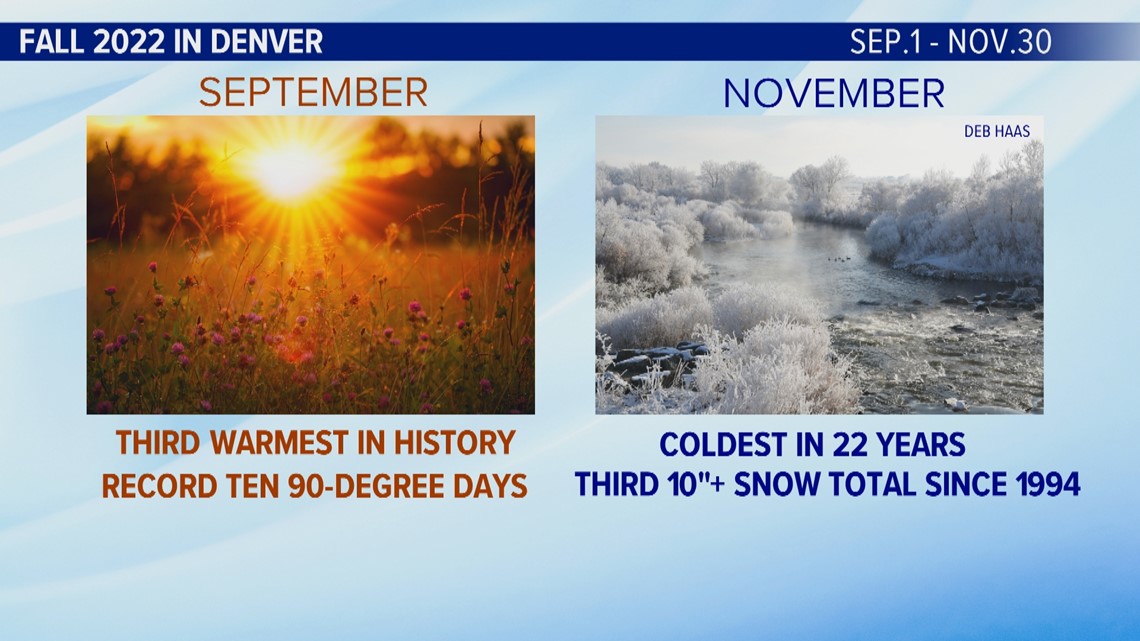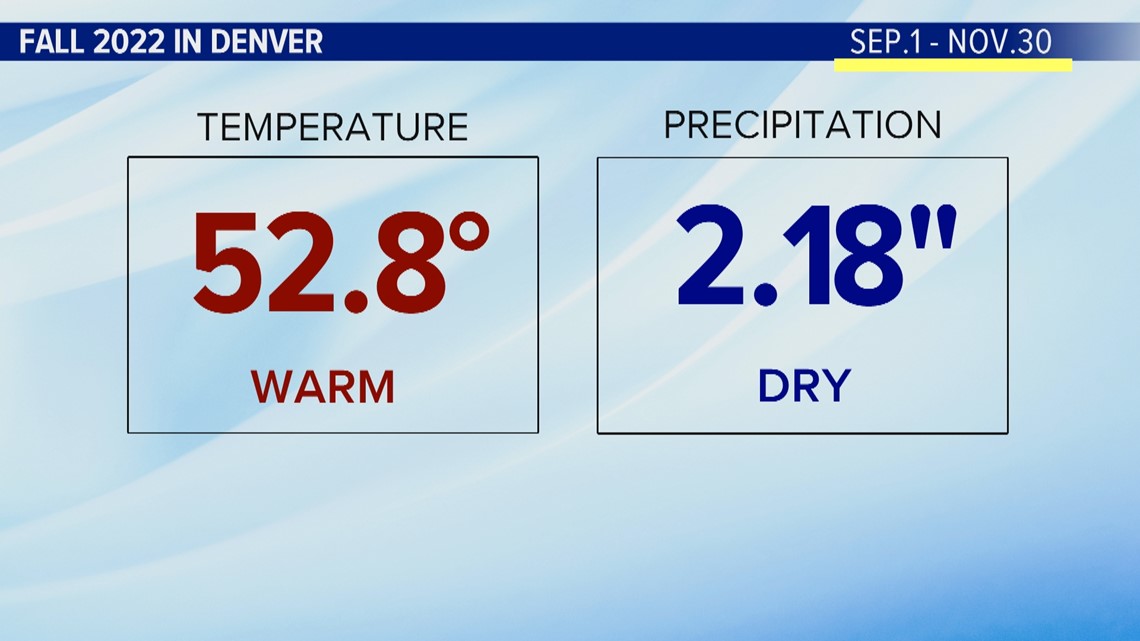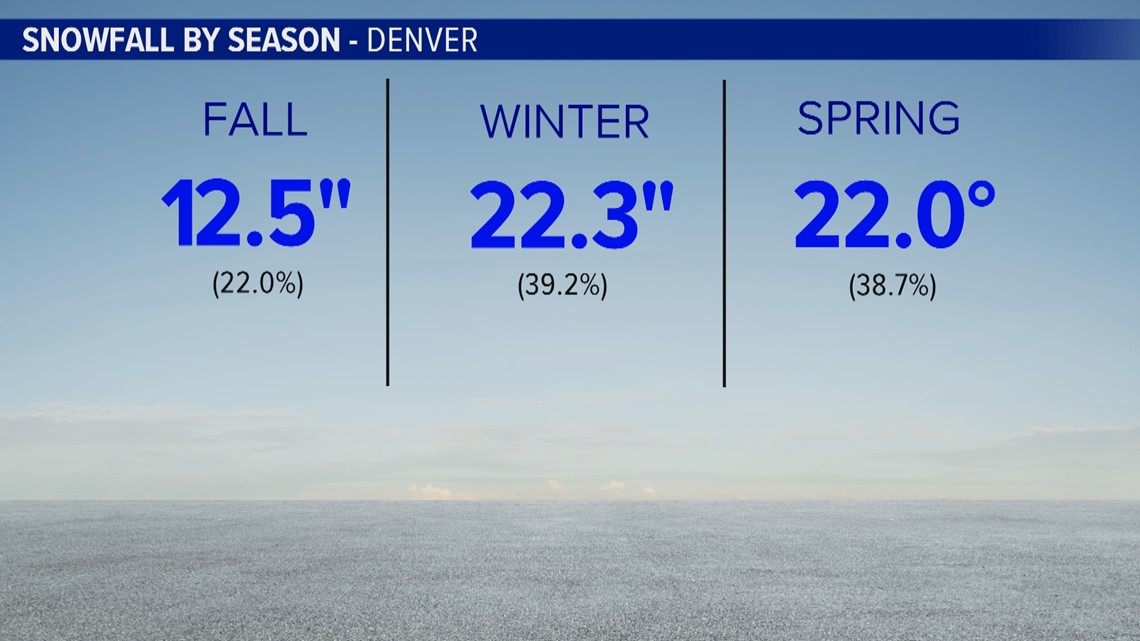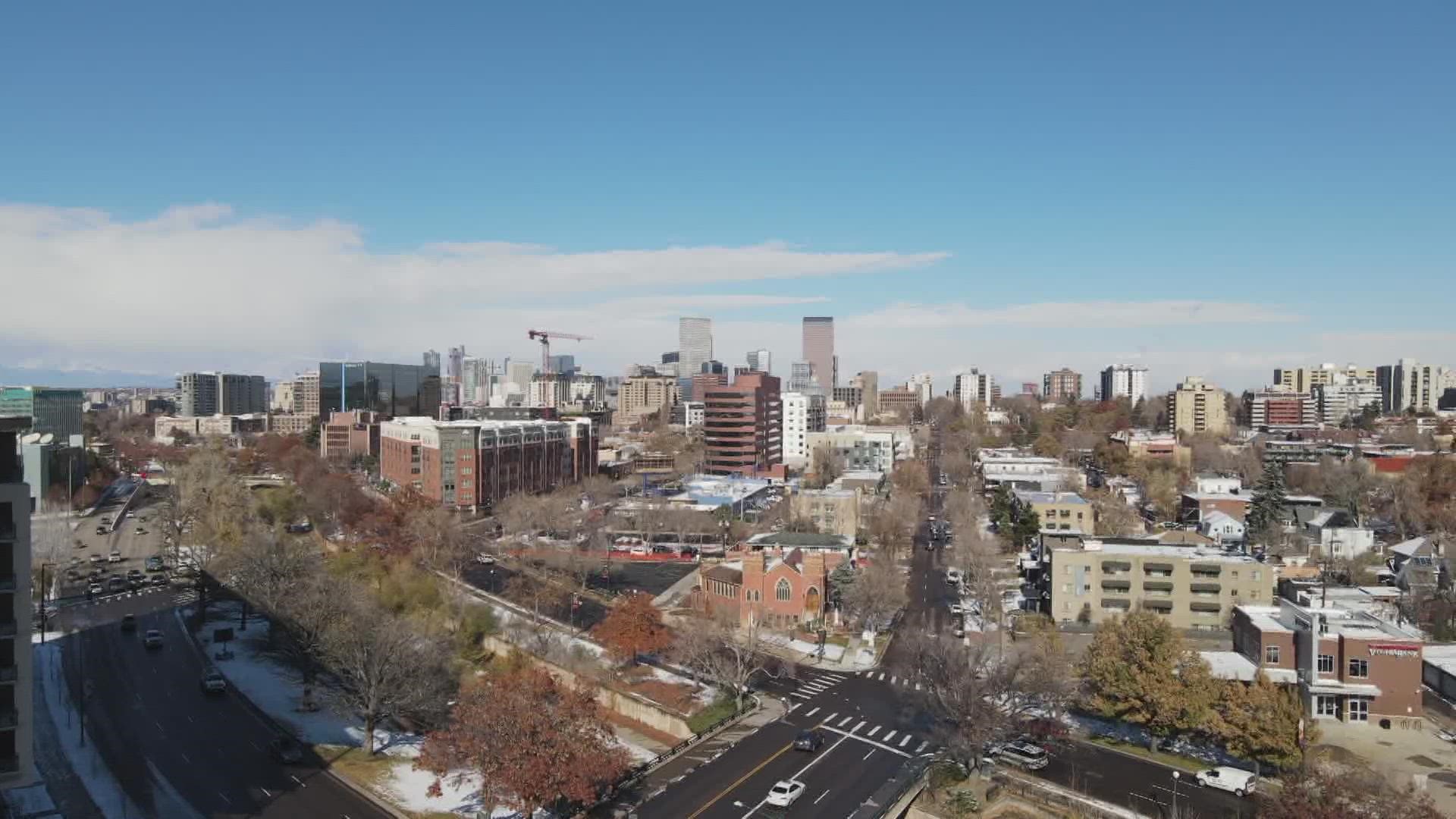DENVER — Dec. 1 is the first day of winter, at least as far as weather record keeping is concerned.
Meteorologists do not use the solstices and equinoxes to mark the seasons because those dates can be different from year to year. They use an equal number of days in each season, that makes seasonal comparisons fair.
Except for winter which does have an extra day every few years because the leap-day at the end of February does count towards winter records.
Meteorological fall is always Sep.1 through Nov. 30. And fall of 2022 in Denver was really a tale of two different seasons wrapped up into one.
September was the third warmest in history and included a record breaking ten 90-degree days.
October had above average temperatures and below average precipitation. It was also the second straight October with no measurable snow in Denver.
And November was the coldest in 22 years with more than 10 inches of snow for only the third time since 1994.


Overall, the fall season finished one degree warmer than average and drier than the 2.98" average in Denver. It was also slightly below average in terms of snow with 10.9". All of which fell in the month of November.


So now what lies ahead for winter in Denver which is Dec. 1 through the end of February? The outlook from NOAA calls for average temperatures and average snow.
And December is on average Denver’s coldest month of the year -- just a tad colder than January. The average temperature for the winter season is just below freezing at 31.9 degrees.


And winter is the snowiest season in Denver, but just barely averaging 22.3 inches. Just slightly snowier than the 22.0" spring snow average.


All of the weather stations in Colorado with at least a 30-year record also finished with below average precipitation for this fall. But some spots in the high country finished with colder than average temperatures.
- The fall temperature in Dillon was 0.7 degrees colder than the average of 37.7 degrees.
- Leadville was 0.9 degrees colder than average.
- Vail was 1.5 degrees colder than average.
- Aspen was 0.5 degrees colder than average.
- Grand Lake was 0.2 degrees colder than average.
SUGGESTED VIDEOS: Colorado Climate

